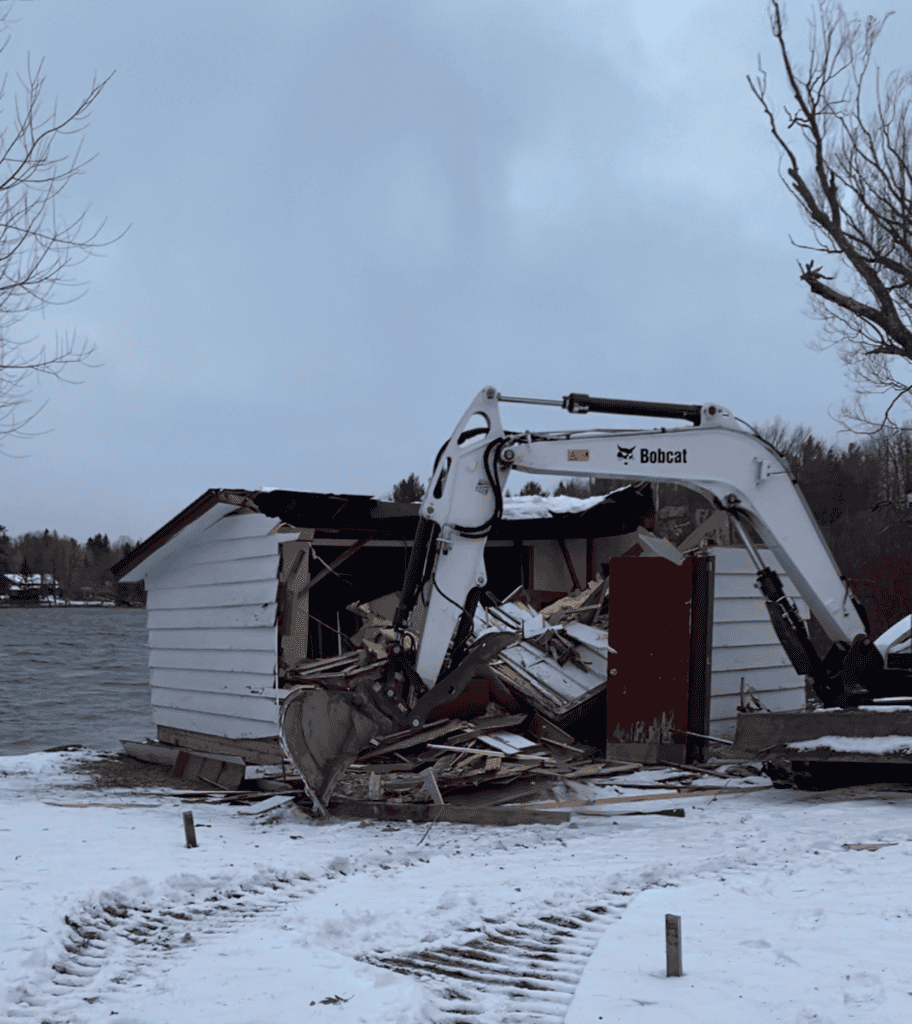Demolition of Houses, Sheds, and Garages
Demolition is a crucial aspect of construction and renovation projects, involving the safe and efficient removal of structures such as houses, sheds, and garages. Whether you’re making way for new construction, clearing out unsafe structures, or simply repurposing your property, understanding the demolition process is essential. This article explores the key considerations and steps involved in demolishing various types of buildings.
Types of Demolition
Complete Demolition
Complete demolition involves tearing down an entire structure and clearing the site. This method is often used for old, dilapidated buildings that cannot be salvaged or renovated. Complete demolition is typically executed using heavy machinery like excavators and bulldozers.
Selective Demolition
Selective demolition, or partial demolition, focuses on removing specific parts of a structure while preserving others. This approach is often used in renovation projects where certain features, such as historical elements or structurally sound portions of a building, are retained.

Planning and Permits
Assessment and Planning
Before any demolition work begins, a thorough assessment of the structure is essential. This includes evaluating the building’s materials, structural integrity, and potential hazards such as asbestos or lead. Planning also involves determining the most efficient demolition method and identifying safety measures.
Obtaining Permits
Demolition projects require various permits from local authorities to ensure that the work complies with safety and environmental regulations. These permits might include approval for noise levels, dust control, and disposal of hazardous materials. Failure to obtain the necessary permits can result in legal penalties and project delays.
Safety Considerations
Hazardous Materials
Identifying and safely removing hazardous materials is a critical step in the demolition process. Asbestos, lead paint, and mold are common hazards in older buildings. Specialized contractors must handle these materials to prevent health risks and environmental contamination.
Site Safety
Ensuring site safety is paramount. This involves securing the perimeter, providing protective gear for workers, and implementing measures to control dust and debris. Properly marked exits, fire extinguishers, and first aid kits should be readily accessible on-site.
Demolition Techniques
Mechanical Demolition
Mechanical demolition uses heavy machinery such as excavators, bulldozers, and wrecking balls to dismantle structures. This method is efficient for large buildings but requires careful planning to prevent accidental damage to surrounding areas.
Manual Demolition
Manual demolition involves the use of hand tools and smaller equipment. This method is often employed in selective demolition projects or when working in confined spaces where heavy machinery cannot operate safely.
Deconstruction
Deconstruction is a sustainable approach that involves dismantling structures piece by piece to salvage reusable materials. This method reduces waste and can provide valuable materials for future projects, such as reclaimed wood, bricks, and fixtures.
Disposal and Recycling
Waste Management
Proper disposal of demolition waste is crucial for environmental protection. Materials such as concrete, metals, and wood must be sorted and transported to appropriate recycling facilities. Hazardous materials require special handling and disposal according to regulatory guidelines.
Recycling and Reuse
Recycling demolition materials not only reduces landfill waste but also provides cost savings for future construction projects. Concrete can be crushed and reused as aggregate, metals can be melted down and repurposed, and wood can be refinished for new uses.
Post-Demolition Considerations
Site Clearance and Preparation
After demolition, the site must be thoroughly cleared of debris and hazards. This may involve grading the land, removing any remaining foundations, and preparing the site for new construction. Proper site preparation ensures a smooth transition to the next phase of development.
Inspection and Documentation
Conducting a final inspection ensures that all demolition work complies with regulatory standards and project specifications. Documentation of the demolition process, including permits, safety reports, and disposal records, is essential for legal and project management purposes.
Conclusion
Demolishing houses, sheds, garages, and other outbuildings is a complex process that requires careful planning, adherence to safety regulations, and consideration of environmental impacts. By understanding the various demolition methods and best practices, property owners and contractors can ensure that their projects are executed safely, efficiently, and responsibly. Whether making way for new construction or clearing unsafe structures, effective demolition paves the way for progress and development.
